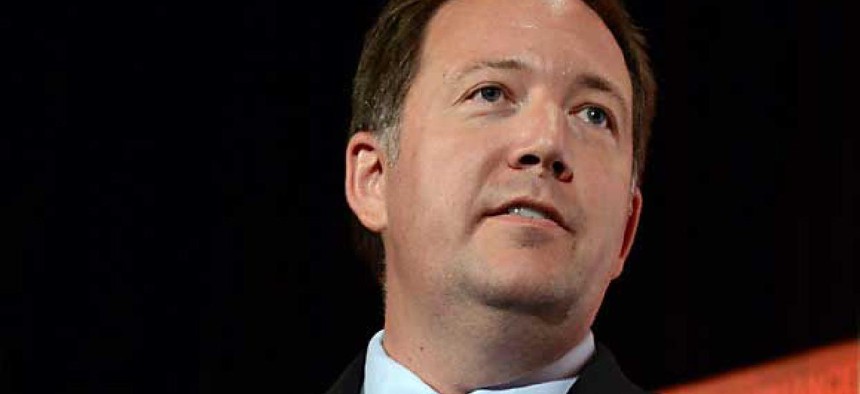The next four years in government IT will be about implementation

Caitlin Fairchild/Nextgov.com
Whether Federal CIO Steven VanRoekel stays or goes, expect a steady course during Obama’s second term.
President Obama’s two campaign themes -- change in 2008 and forward in 2012 -- could just as easily describe the government’s likely approach to information technology during his two terms, analysts told Nextgov on Wednesday.
The president’s first term included major programs to make federal technology buying more agile, to shift large swaths of the government’s computing from legacy data centers to nimble computer clouds, and to make raw agency data more transparent and accessible.
Obama’s second term -- in the beginning at least -- is likely to focus on carrying those initiatives to fruition rather than on bold new plans, experts said following the president’s reelection victory late Tuesday.
That steady course where priorities are concerned might be accompanied by steady hands at the helm.
Government IT watchers told Nextgov they’d heard no speculation that either Chief Information Officer Steven VanRoekel or Chief Technology Officer Todd Park planned to leave office at the end of the president’s first term. Both men have served at their posts less than 18 months so far. Neither responded to Nextgov messages inquiring about their plans.
If VanRoekel does leave the administration, one IT watcher said, he expects the president will search for a successor who wants to be a good steward of existing initiatives rather than launch new ones. That successor might be someone who’s already inside the federal IT community and understands the position’s responsibilities such as Veterans Affairs CIO Roger Baker or Homeland Security CIO Richard Spires, said the source, who asked not to be named.
White House Digital Strategy Director Macon Phillips said he wasn’t prepared to comment on his future plans Wednesday. Phillips has been at the White House since the president took office and worked on Obama’s 2008 campaign.
The greatest pressure on federal IT during the second term will be demonstrating that cloud computing, big data analysis and other initiatives can produce the cost savings they promised for government, said Trey Hodgkins, senior vice president of global public sector at the industry group TechAmerica.
Much of that pressure will result from the continuing budget deadlock between the president and Republicans in Congress and a slate of automatic cuts due to be enacted in early 2013 under sequestration, he said.
“My read of what happened is that nothing’s changed,” Hodgkins said, noting the election produced no significant shifts in party power at the White House or in either house of Congress. “All the personalities are still there and there’s no visible compromise.”
One component of that reform may be efforts to rationalize federal technology purchasing requirements, Hodgkins said.
Some pressure for cost cutting also will come from the fact that technology initiatives begun during Obama’s first years in office are now well under way, said Tom Suder, president of Mobilegov, a government technology vendor.
“The first administration was about setting up the mechanics and infrastructure,” he said. “Now you have that infrastructure in place and hopefully you’ll be able to really start doing something with it.”
In the realm of mobile technology that likely will mean shifting from building external-facing mobile applications aimed at providing better citizen services to building internal applications focused on making government more efficient, Suder said.
“The reason you do citizen services stuff first is it’s a little easier because the data is public so security controls aren’t as great,” he said. “That’s the low-hanging fruit. But enterprise applications are how you really save money with mobile and cloud.”
The government’s social media offices are likely to see a similar shift in focus from building to implementation during Obama’s second term.
Much of his first term was devoted to building agencies’ presence on different social media, said Justin Herman, social media manager at the General Services Administration’s Center for Excellence in Digital Government. Part of the second term, he said, will be devoted to developing governmentwide performance metrics so agencies are making the best possible use of those social media accounts.
Herman was speaking during a panel discussion Wednesday that was part of the digital development conference DC Week.






